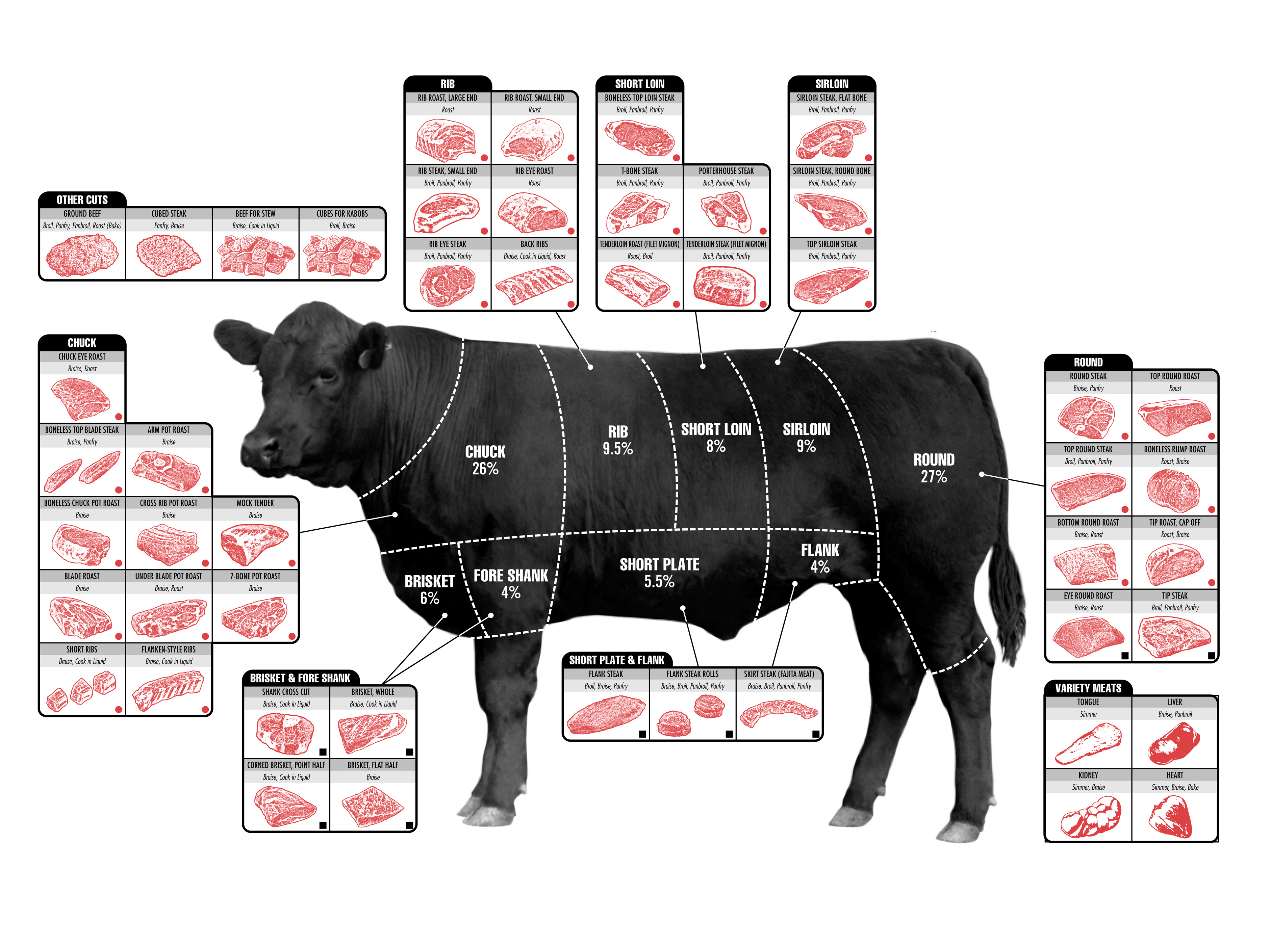Beef Guide
Beef cuts can be confusing – there are so many options! The main cuts may sound familiar: chuck, rib, brisket, sirloin. But each of these can also be divided into more specific cuts that vary in taste and tenderness.

Image from Business Insider
Chuck
The forequarter of the animal provides the chuck cuts – mostly roasts and ribs. This meat comes from the neck, upper arm and shoulder and makes good stew meat and pot roasts. It’s also good for ground beef.
Ribs
The forward ribs of the animal become the classic prime rib. Ribeye steak and rib roast also come from this area. These cuts are delicious and tender.
Short loin
This area contains the best cuts of steak – T-bone, porterhouse, and strip. When you order beef through a locker, you can choose how thick you want these cut. Brian likes his T-bones at least an inch thick!
Sirloin
The sirloin area at the far end of the back provides sirloin steaks that are great for grilling and the tenderest cut of beef, the tenderloin. There is also delicious roast and barbecue potential from the bottom of the sirloin.
Round
The round roughly corresponds to the back leg of the animal. Rump roast, round steak, and tip steak come from this area. Meat in the legs tends to be more lean, so it makes good sandwich meat.
Brisket
Brisket is one of the most flavorful cuts of beef and a favorite in the Kreutner family. Brisket comes from the chest and is excellent for smoking or barbecuing.
Shank
The shank is the animal’s upper leg muscle and is one of the toughest cuts. It’s used in the Italian dish osso buco.
Short plate
The short plate includes the short ribs and skirt steak. These cuts can be braised or made into ground beef.
Flank
Flank steak is delicious on the grill. It’s also often used for ground beef.
Other options
Beef bones can be made into broth, which has many health benefits, or shared with your canine companions. Organ meat is also very nutritious and some people enjoy beef heart, tongue, or liver.
Whatever cuts sound best to you, our lockers can accommodate!
Corn-fed vs. Grass-fed Beef
Cattle that are fed only grass, hay, and other plant foods take at least twice as long to reach harvest weight as corn-fed cattle do. Since grass-fed beef is from older animals, it is tougher and stringier. This is why many people prefer corn-fed to grass-fed beef.
Beef is a great addition to a healthy diet. Corn-fed and grass-fed beef contain the same nutrients, with only miniscule differences in fat composition. Grass-fed beef tends to be leaner than corn-fed beef, detracting from its taste, but you can get both types of beef with the same fat content. If you want to compare tastes for yourself, make sure that the fat content in your test meat is the same for an accurate comparison.
For more information about beef and nutrition, check out the Beef and Nutrition powerpoint below.

Learn about the nutritional value of beef and the differences between corn-fed and grass-fed beef.
Beef and Nutrition – Powerpoint
